Canon EOS M3 Review
Canon EOS M3
Is it third time lucky for Canon's CSCs?
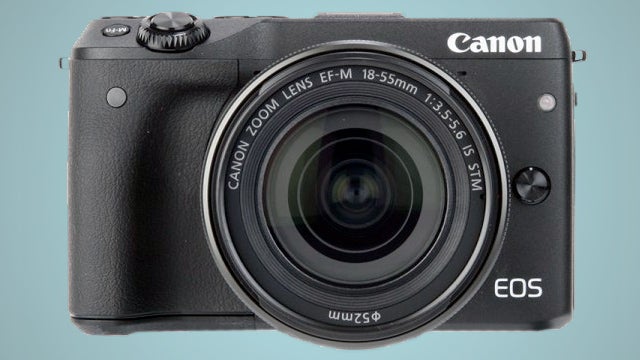
Sections
- Page 1 Canon EOS M3 Review
- Page 2 Performance, Image Quality and Verdict Review
Verdict
Pros
- Good handling and control
- Well implemented touchscreen
- Decent images
Cons
- Relatively slow all-round performance
- Disappointing dynamic range
- Chunky kit lens
- Limited lens selection
Key Specifications
- Review Price: £599.00
- 24.2-megapixel APS-C sensor
- Built-in flash
- ISO 100-12800
What is the Canon EOS M3?
The Canon EOS M3 is the third stab at a CSC from what is still probably the biggest name in cameras. It follows the 2012 Canon EOS M, a camera that did so badly Canon didn’t even bother to release the follow-up M2 in the UK, Europe or US.
So has Canon come back into the world of compact system cameras with a bang? Not really.
Its manual controls, build and handling are all great. But the limited lens selection and uninspiring features make this £600 bundle seem a bit dated next to rivals like the Sony Alpha 6000 and Samsung NX500.
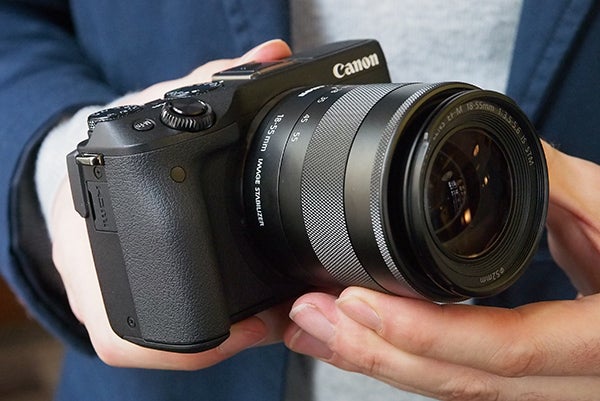
Canon EOS M3: Design
The last year or so has seen compact system cameras tend to try to offer more lifestyle-leaning features and designs. That means more style, fewer millimetres in every dimension.
However, the Canon EOS M3 doesn’t play that game. It looks and feels more like what you’d get if you took an EOS DSLR, took all the bits out that separate CSCs from DSLRs and trimmed the body down accordingly.
There’s no eye-catching styling here, just a sensible body finished in either white or black. Pro tip: black looks better.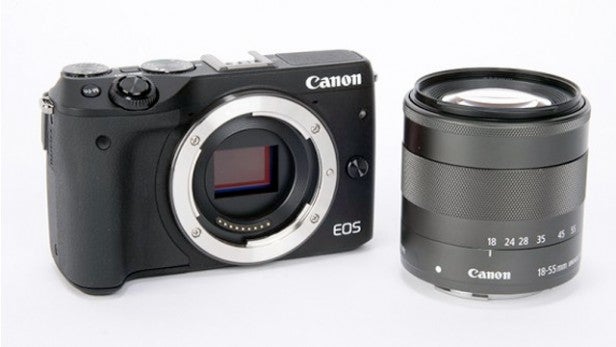
Construction is a good deal stronger than a real entry-level Canon DSLR, though. It has a steel inner shell while the outermost layer is aluminium, getting you a cool and hard feel. Of course, what you’ll touch the most is the grip, which has a faux leather finish like many of Canon’s cameras.
Canon EOS M3: Handling and Controls
The chunky grip is one of the Canon EOS M3’s wins, making this one of the more comfortable CSCs. You get a sure grip even when when holding and operating the camera one-handed.
It’s not for everyone, though. The Canon EOS M3 probably doesn’t have the right dimensions if you’re out for something small to complement a real high-end DSLR. Everyone has their own standards, of course, but this is one of the chunkier CSCs.
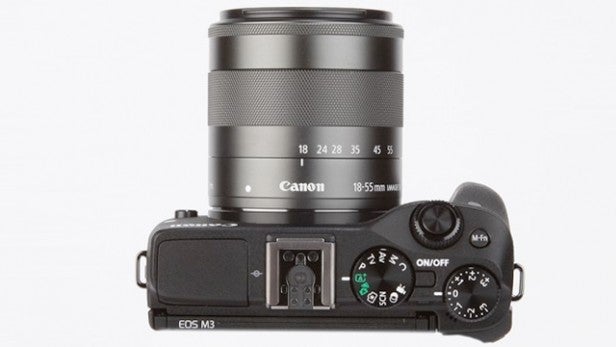
Where it’s clearest is in the kit lens. The Canon EOS M3 comes with an 18-55m lens, and it’s pretty huge by current standards. Large APS-C CSC kit lenses were something we just had to accept until recently, but now that Sony has switched over to using slimline ‘power’ lenses for its Alpha models the EOS M3’s gigantic kit lens seems a bit past-it.
The Canon EOS M3 doesn’t offer you a lot of choice lens choice either. There are only a handful, far fewer than the other CSC systems. An obvious first extra one to get hold of is the 22m f2 lens, equivalent to a 35mm lens. That costs £190. You’ll need to get hold of an EF-M to EF adapter if you want to use normal Canon APS-C DSLR lenses as the two types use a slightly different mount.
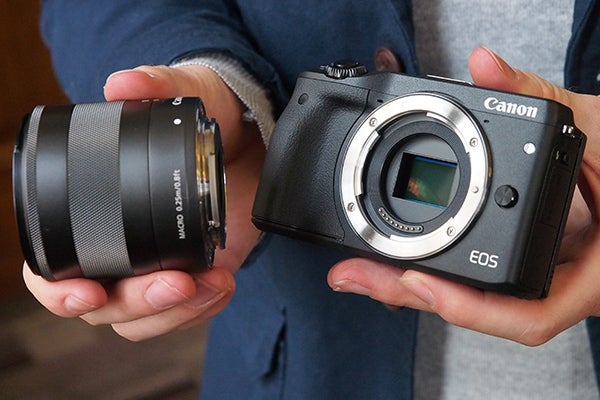
We found that focusing speeds when using EF lenses varies too. If you want a compact way to use Canon lenses, you’re probably better off with a Canon 100D, which is now also significantly cheaper. After all, the mount adapter alone costs £100, and you won’t need one with that camera.
We won’t deny that some of the Canon EOS M3’s higher-end hardware elements feel very nice, though. For one, it’s clearly aiming for the enthusiast crowd, using great manual controls.
There’s a metal manual control dial that sits around the shutter button itself, and it has a lovely, firm and clicky action. Combined with the exposure dial and secondary control dial on the back (by the D-pad controls), the Canon EOS M3 gets you very complete-feeling control
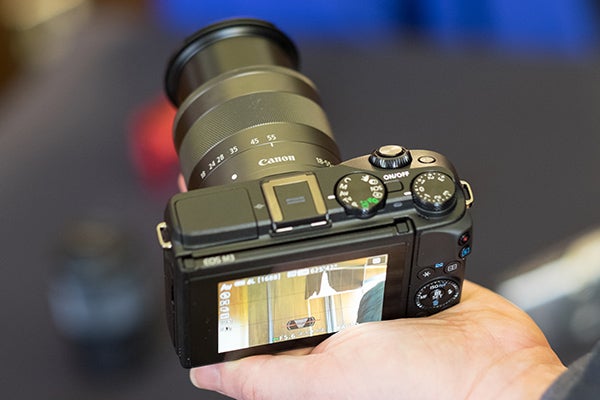
Canon EOS M3: Screen
It has a touchscreen too, and it doesn’t feel as though touch operation works against the hardware controls. They fit together well. The Canon EOS M3’s touchscreen is dead responsive too, as snappy as a smartphone screen.
Granted, it’s most useful for selecting a focus point, but when you do that virtually every time you take a photo, that’s important.
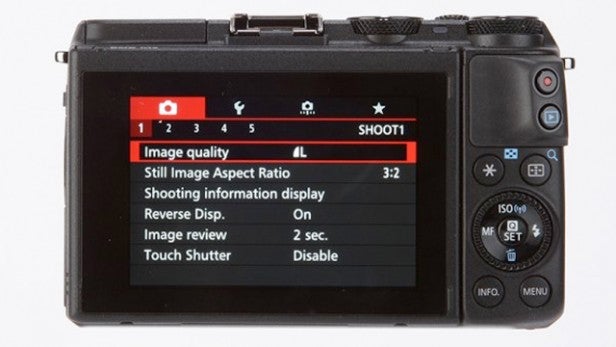
The Canon EOS M3 screen is three inches across and offers 1.04-million dot resolution. It’s an LCD screen that gets you pretty accurate colours and max brightness that can deal with shooting outdoors in sunlight. You do need to make sure to keep an eye on the brightness level, though, as otherwise the display can make your shots look overexposed when they’re not. Such are the limits of an LCD screen’s style.
In a first for the EOS M series, the Canon EOS M3 screen also tilts. It flips all the way around 180 degrees upwards to act as a selfie monitor, and can tilt 45 degrees the other way to let you shoot overhead more easily.
This is a pretty successful screen that makes some much-needed modernisations to the EOS M blueprint.
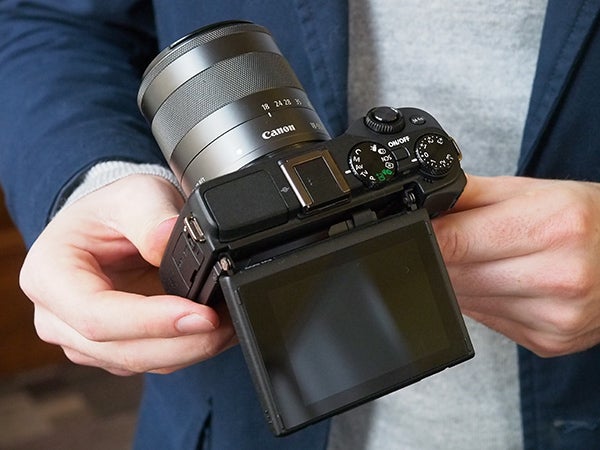
Canon EOS M3: Features
The Canon EOS M3 doesn’t have everything, though. The most important omission is a viewfinder, which you can probably tell just by looking at the M3’s lines.
Instead, Canon makes a 2.36M-dot EVF accessory that slots onto the EOS M3 using the hotshoe. However, as it and extra £250 it adds to the overall cost pretty significantly.
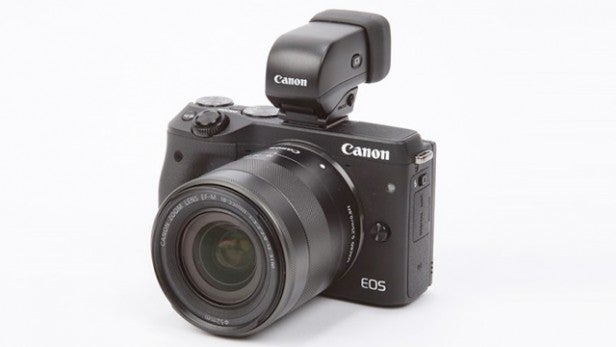
There is a flash this time, though: the original EOS M shipped with a separate little flash hotshoe unit. It pops out of one side of the top plate.
It has pretty good wireless features too. There’s Wi-Fi, plus NFC and even an IR sensor. This lets you use more traditional remote controllers, rather than your phone or tablet, to fire off the shutter remotely.


